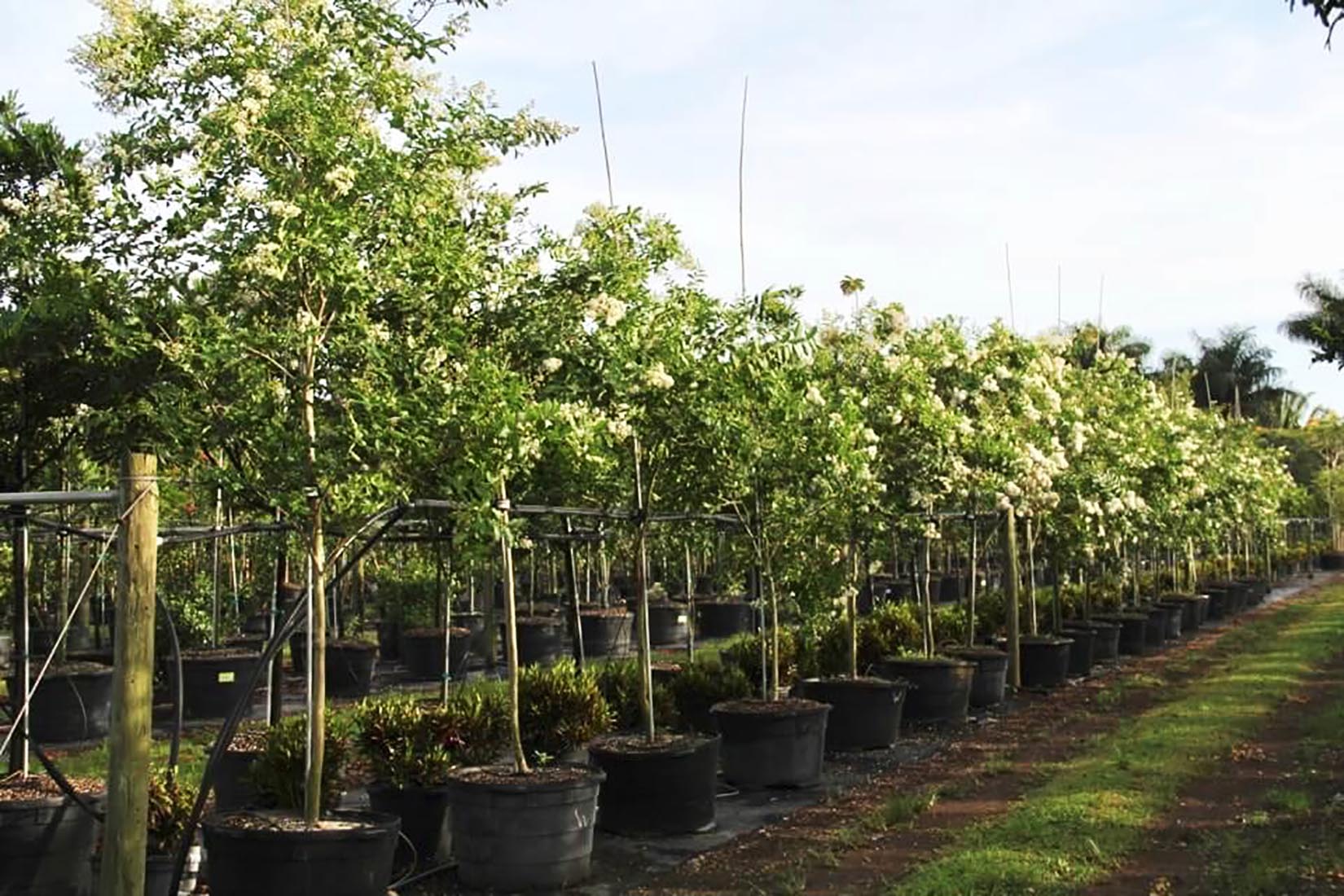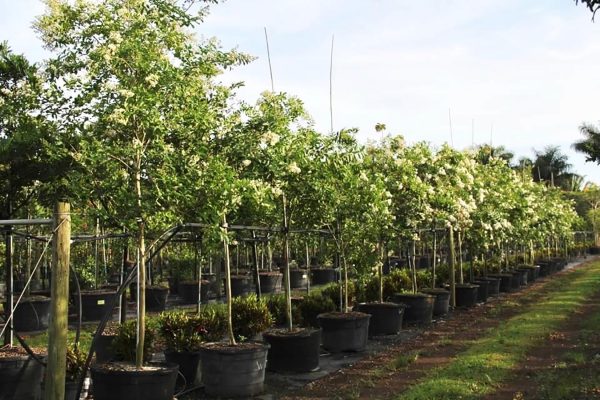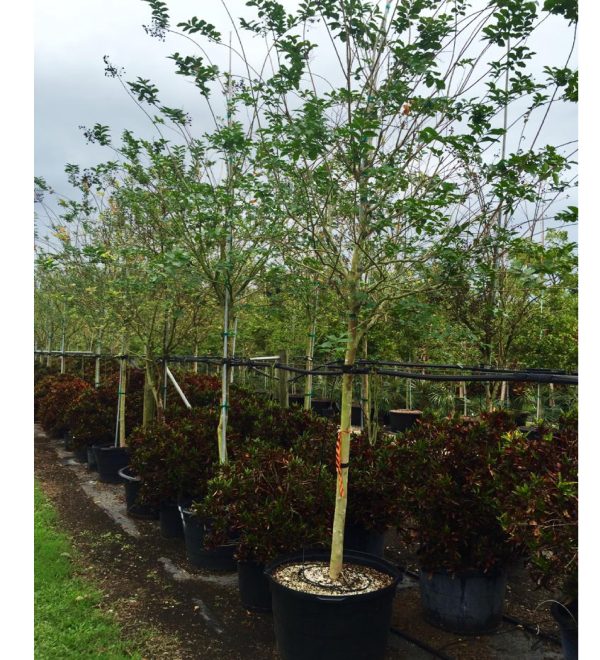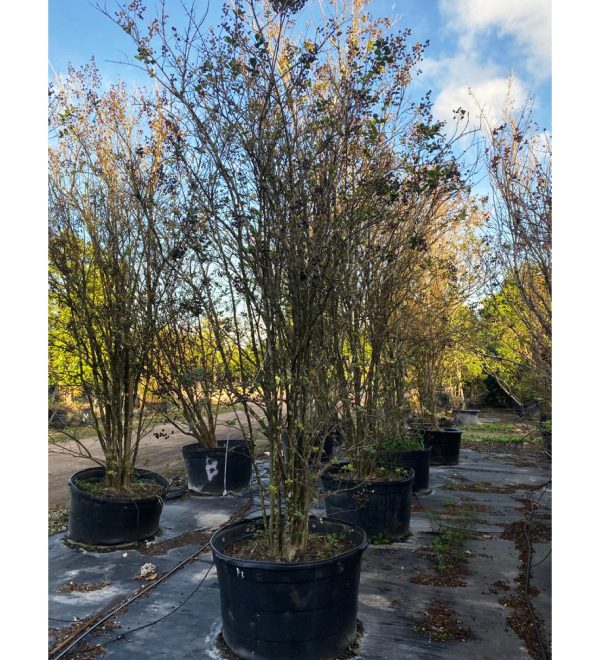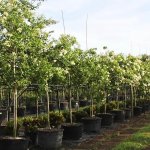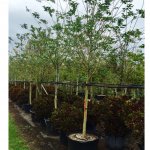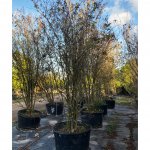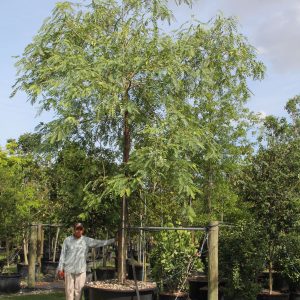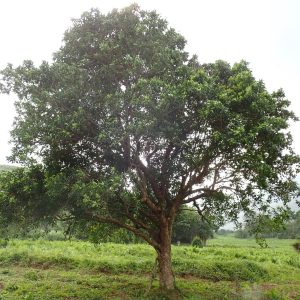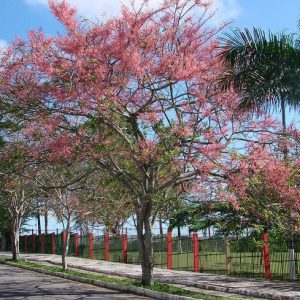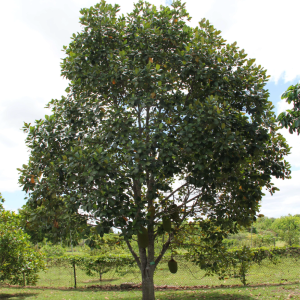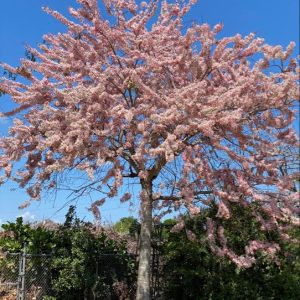Description
Crape myrtle tree description
Lagerstroemia indica (Tuscarora) or crape-myrtle is a single or multi-trunk small tree with a wide-spreading to moderately dense crown. Tuscarora can be flat-topped, rounded, or vase-shaped. It can potentially grow to a height of 10–30 feet and a spread 15–25 feet, but in cultivation is typically much smaller. It can also be grown as a shrub.
The bark is very attractive, as it is smooth, pinkish-gray, and mottled, and peels off yearly. Besides, the dark-green, shiny, deciduous throws its leaves in winter; they are alternate, small, 2 – 4 inches long, and under 2 inches wide, with smooth edges, round or shape, changing to yellow, orange, or red in autumn before falling.
Furthermore, flowers appear when the tree is without leaves and are very showy, borne in erect clusters up to 3 1/2 inches long; blossoms have ruffles or crinkly petals (like crepe paper), are variable in color depending upon the variety and measure 1 – 1 1/2 inches across. Fruits are small, oval to round capsules, about 1/2 inch long and brown; fruits persist on the tree and are showy before releasing disc-like seeds.
Lagerstroemia Indica tree cultivation
Crape-myrtle tree propagates by seed or cuttings and grows best in moist, well-drained soils. Pruning is necessary to obtain a single trunk and to shape the crown. The plant is hardy, it tolerates freezing temperatures but is susceptible to aphids. Tuscarora is a very popular small landscape tree because of its overall beauty. It is an excellent tree or shrub in yards and gardens, parks, parking lots, and along roadways.
🌳More popular and beautiful plants: Queen crape myrtle

